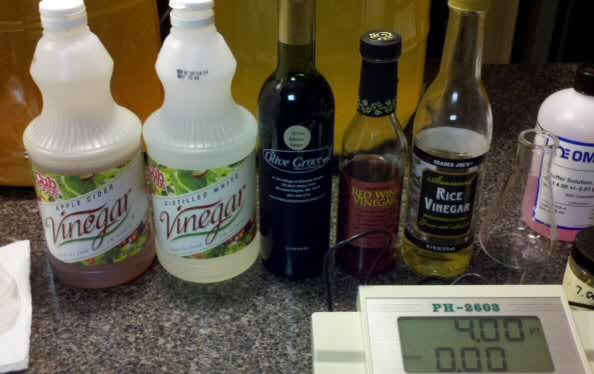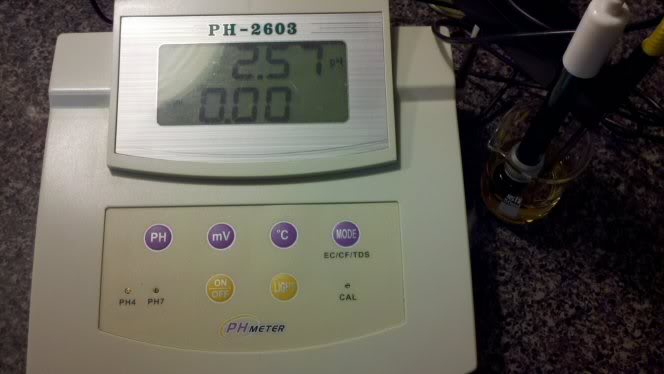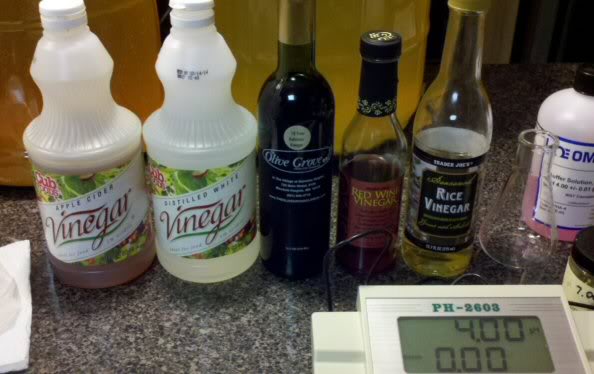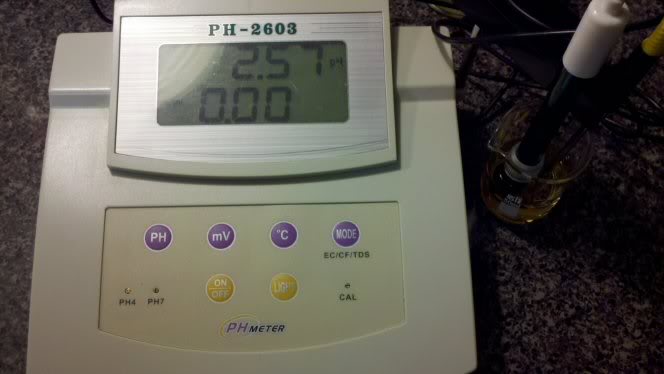Have you explored acitity enough to help answer something? Am I right that titration percentage expresses the amount of glacial acetic acid in the solution and that pH expresses the overall acidity of the solution. So since with vinegar, we're always talking about acetic acid, is there a simple table of equivalent between percentage and pH for vinegar (and presumably for any acetic acid solution), ignoring the effects of other components in some vinegars. But I don't find such a table. Am I missing something?
You're actually very close. The problem lies in assuming that the titration percentage on the label reflects only acetic acid. It doesn't. It's simply a way of expressing the total titratable acidity as if the only acid were acetic.
I'm by no means a chemist, though I've taken a couple of rudimentary wine chemistry classes at the university extension here. Most of my understanding therefore comes from that topic, so I'm going to use wine as an example.
When performing a simple titration, the results are always expressed as a single type of acid, even though there may be other acids present. For example, wine contains tartaric, malic, citric, acetic, succinic, lactic, carbonic, and a handful of other acids. Tartaric is the predominant acid, usually making up more than half of all the acids present. So when we titrate wine, we express the results of the titration as if all of the acid is tartaric (except in parts of Europe where, inexplicably, sulfuric is the standard). The result is calculated by plugging numbers into a formula. One constant in the formula is called the Acid Dissociation Constant (ADC), and it's different for each type of weak acid. For wine, we plug in the ADC value for tartaric acid.
When we say that a vinegar is 5% acidity, that's actually the total of all acids present in the vinegar, but it's calculated using acetic acid's ADC value. If you were to perform an analysis of apple cider vinegar, you would find it also contains a great deal of malic acid. Wine vinegar, being made from wine, contains mostly tartaric. Since distilled vinegar is manufactured using only water and grain alcohol, it's really the only vinegar where the acid profile is mostly acetic acid.
While it stands to reason that if you add acid to a solution the pH will drop, one of the things that I learned in wine chemistry class is that pH and the titratable acidity don't have any direct correlation. To illustrate, let's say that you have two containers of water. If you were to add 5 gm of phosphoric acid to one and 5 gm of lactic acid to the other, each container would contain 5 gm of acid, but the pH of the container with the phosphoric acid would have a lower pH value because phosphoric is a much stronger acid. When you start factoring in other variables like buffering capacity, it becomes a big cloudy mess.
I guess that was kind of a long answer, but I hope it helps explain why there isn't a table that says x% titratable acidity = y pH.
By the way, I think your absolutely correct about the interaction of tannin and acidity in wine vinegar. One of the things we're taught in winemaking is that a wine that's both tannic and acidic is not a pleasant wine to drink. That's why you'll find that tannic red wines have a relatively high pH as opposed to crisp white wines that have little tannin.







